| Póngase en contacto con nosotros para cotización | Correo electrónico: 464560351@qq.com | Whatsapp y Wechat: + 8618620373879 |
Descripción general
El probador de resistencia de aislamiento HT9920 está diseñado para medir la resistencia de aislamiento de componentes y equipos. Usando el método de prueba de voltaje constante, su rango de salida de voltaje es de 25~1000V y la corriente de salida máxima es de 1.8mA. HT9920 tiene detección de anomalías de contacto y función de prueba de anomalías de cortocircuito, el período de prueba mínimo es de solo 50 mS. |
Características
|
Interfaz de software del probador de aislamiento 9920
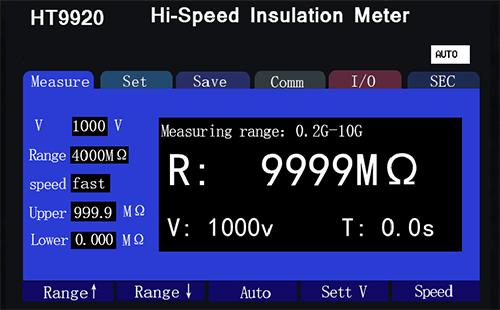
Panel posterior del comprobador de aislamiento 9920
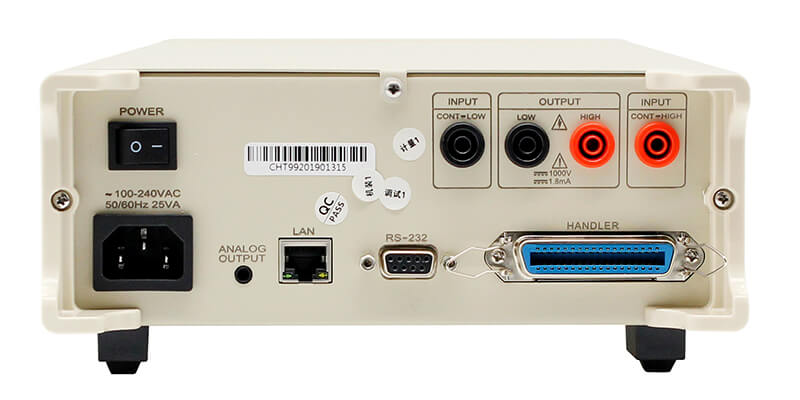
Especificación
| Modelo | HT9920 | ||
| Mostrar | Pantalla TFT-LCD de 3,5 pulgadas | ||
| Parámetros de medición | Resistencia de aislamiento | ||
| Rango de medicion | 0.1 ~ 9999MΩ (5 rangos) | ||
| Precisión básica | ±2% lect. ±5 dígitos | ||
| Voltaje de medición | CC 10 ~ 1000 V 1,8 mA | ||
| Velocidad de medición | 50ms (rápido) 500ms (lento) | ||
| Pantalla de error de conexión | Pantalla de circuito abierto del lado de alto voltaje “ContHi”; pantalla de circuito abierto del lado de bajo voltaje "ContLo"; pantalla de circuito abierto de salida "ContHL" | ||
| Pantalla de error de cortocircuito | "CORTO" | ||
| Pantalla de rango superior | El rango excede el límite inferior de visualización “UNDER.F”; el rango excede el límite superior muestra “OVER.F” | ||
| Corriente de descarga | Descarga de corriente constante de 12 mA | ||
| comparador | PASA/L.FALLA/U.FALLA | ||
| Almacenamiento de datos | Se pueden grabar 10 conjuntos de datos de configuración del panel | ||
| Desencadenar | Disparador IO, disparador interno, disparador manual, disparador de bus | ||
| Tipo de E/S | PNP o NPN | ||
| Interfaz | E/S externa, analógica, LAN, RS232 | ||
| Fuente de alimentación | Voltaje: 100 V ~ 250 V CA Frecuencia: 50 Hz/60 Hz | ||
| Tamaño y peso | Tamaño (largo x ancho x profundidad): 325 mm x 215 mm x 96 mm Peso: 2 kg | ||
| Accesorios | Clip de prueba HT9921, conector PB36, cable de comunicación HT9800, cable de alimentación (opciones disponibles) |
Solicitud
| El probador de resistencia de alta velocidad HT9920 tiene una amplia prueba de aislamiento de vehículos híbridos, componentes electrónicos, electrónica de vehículos, baterías de litio, materiales, baterías blandas y baterías eléctricas. |

Introducción a la función característica
Función de detección de cables
Principio del circuito
| Cada extremo de prueba se divide en 2 líneas de prueba y se agrega una fuente de corriente constante entre las líneas de prueba. Cuando el dispositivo bajo prueba está en cortocircuito al final de la prueba, la fuente de corriente emite un nivel bajo; de lo contrario, emite un nivel alto. Úselo de esta manera para verificar si el objeto de prueba o la línea de prueba están en buen contacto. |
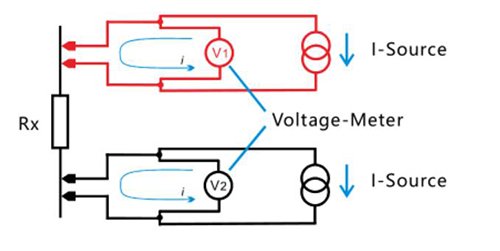
Ejemplo de aplicación
| Los cables de prueba rotos y el mal contacto con el objeto de prueba darán lugar a una evaluación errónea de la prueba de aislamiento, lo que puede causar que los productos defectuosos fluyan al mercado. Para evitar este tipo de situaciones, tenemos una función estándar de verificación de contactos, que puede notificar la desconexión o el mal contacto para evitar la situación anterior. |
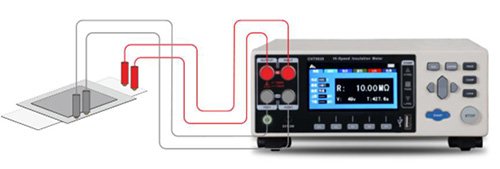
Función de juicio de cortocircuito de bajo voltaje
| Cuando hay partículas de metal u otros defectos que hacen que el producto se pruebe en caso de cortocircuito, la aplicación directa de alto voltaje al producto hará que los puntos problemáticos se quemen y falsifiquen un buen estado de aislamiento. Como resultado, el producto defectuoso fluye hacia el mercado. Las partículas de metal en el producto pueden cortocircuitarse nuevamente después de la vibración. |
Un resultado falso de probador de buen aislamiento en la primera situación
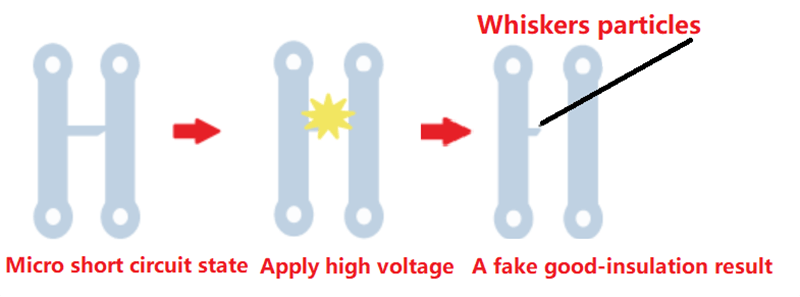
Un resultado falso de probador de buen aislamiento en la segunda situación
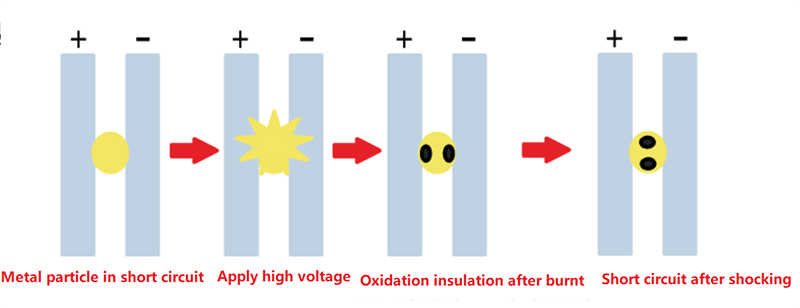
Característica de producto
| Mal ambiente de taller, en polvo, vibración, humedad, ambiente de temperatura |
¿Cómo medir el aislamiento de los productos?
HT9920 built-in a high-efficiency switching power supply, device internal heat is small and no heat dissipation. So the chassis can be made sealed to avoid dust. The sensitive parts select low-temperature drift components and strengthen moisture-proof treatment. The whole PCB using patch design technology has a strong shockproof performance. |
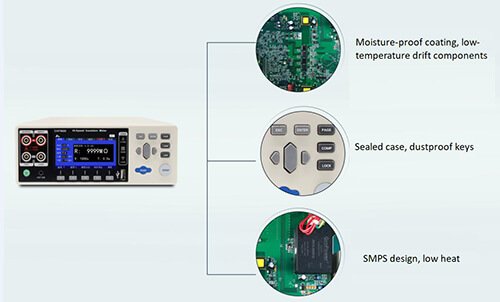
SMPS design, low heat Moisture-proof coating, low-temperature drift components Sealed case, dustproof keys |
Fast and efficient inspection
| The fastest inspection time of HT9920 insulation tester is 50ms (0.05s), which achieves the fastest speed in the industry and achieves the purpose of shortening inspection time. |
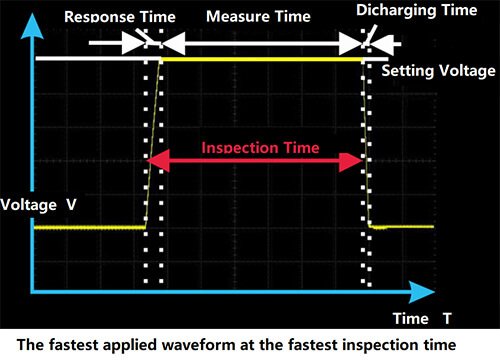
HT9920 insulation tester is featured as:
|

HT9920 insulation tester VS traditional insulation tester in the market
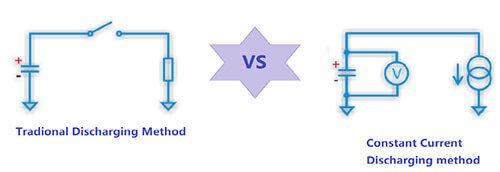
Principle of discharge
HT9920 using transistor to constant current 12mA discharge, traditional insulation test to constant resistance discharge.
The discharge time compare with traditional insulation tester
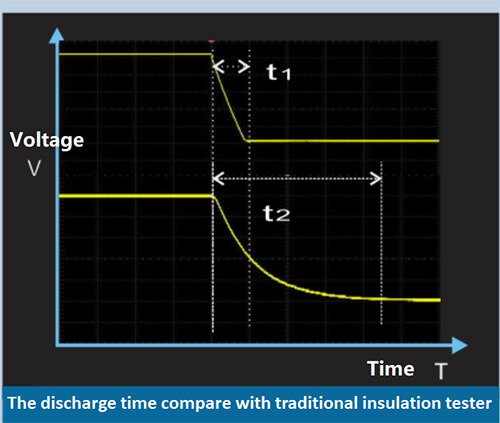
|
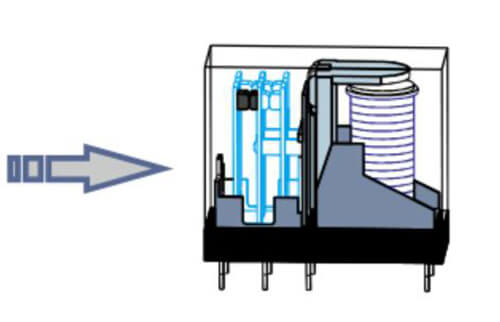
Relay contact point burnt when using traditional discharging
Rich interfaces configuration

Support U disk program upgrade
| When the customer needs to customize any function and no hardware is involved, the customized changes can be upgraded through the disk interface. You don’t need to send the instrument back to the factory. |
Quick import from U disk settings
| When multiple HT9920 insulation testers are used in the same production workshop, when new products need to be produced, users need to set the parameters in insulation testers again. It is allowed users to quick import the parameter configuration from U disk to quickly copy the parameter settings between the testers. It improve efficiency while ensuring the consistency of parameter configuration, reducing the possibility of errors. |
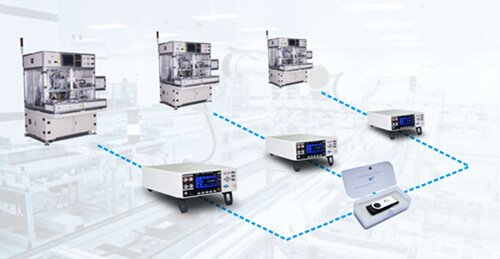
Low background current
The current sampling part in the traditional instrument cannot be isolated from the ground with high voltage and high insulation impedance. When the DUT or test tool and the ground have poor insulation, the test stability and accuracy are affected by the ground current loop and directly cause the test to fail. |

Insulation testing requirements for soft-pack batteries
Insulation testing requirements for soft-pack batteries is to detect the insulation degree between the aluminum-plastic pouch and the two tabs, and the insulation degree between the two tabs. In the testing process, it is necessary to ensure that the aluminum plastic pouch is effectively pierced by the puncture needle, and the test is effective. The traditional inspection method of soft battery requires two insulation resistance meters in four steps. One is used to test the insulation resistance between the two tabs and the other is used to test the insulation resistance between the tabs and the pouch. But now, you only need one HT9920 tester insulation tester to make it. |
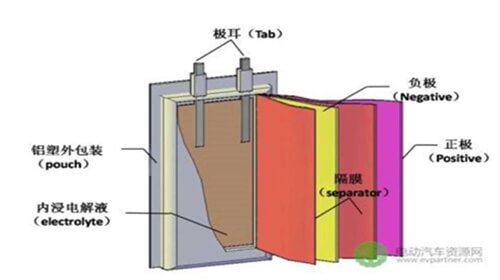
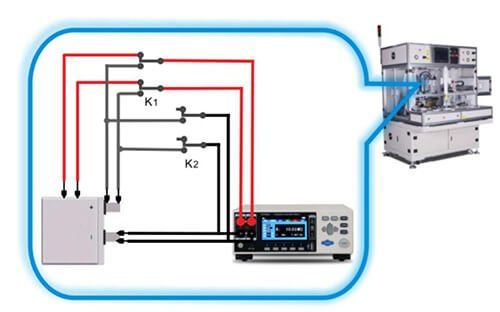
| Comparison | HT9920 Solution | Traditional Solution |
| Hardware cost | 1 piece HT9920 1 piece 4-pole double throw relay | 2 piece insulation tester 4 piece 4-pole double throw relay |
| Test procedure | 1. Recall setting 1 to test the insulation resistance between pouch and tabs’ 2. Recall setting 2 to test the insulation resistance between the two tabs. | 1.Using PLC to test whether the three sets of probes are in good contact; 2. Short-circuit the two tabs to discharge; 3. Insulation resistance meter A detects the insulation resistance between the two tabs; 4. Insulation resistance meter B detects Insulation resistance between the tabs and the aluminum plastic pouch. |
| Test efficiency | High The HT9920 tester comes with contact anomaly detection, efficient and fast. | Slow El instrumento no tiene detección de anomalías de contacto. |
| Ejecución y mantenimiento de proyectos | Simple no más de 10 cables | Complicado Más de 40 hilos” |





